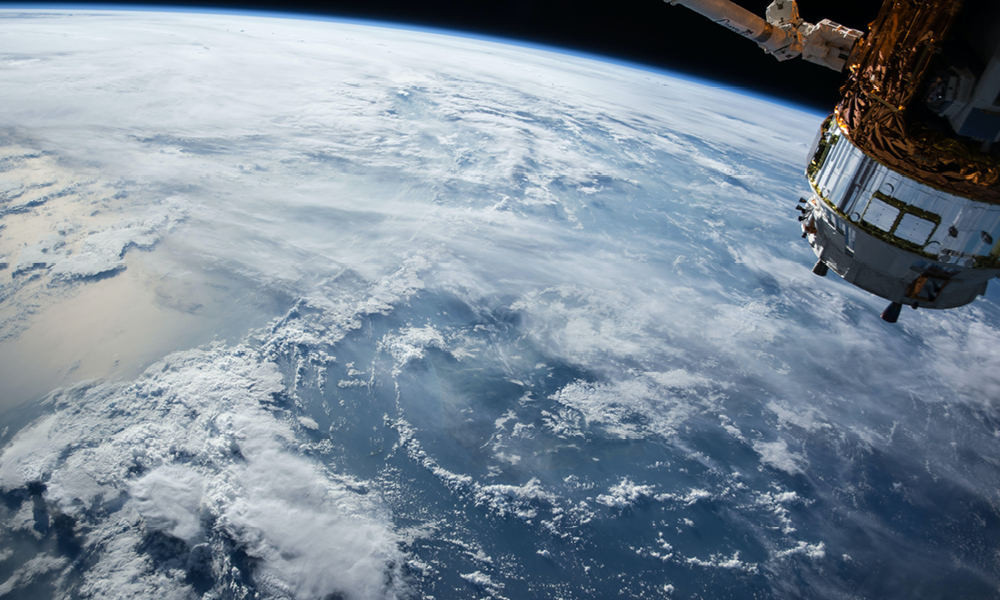Have you ever wondered what law applies on the Moon?
Perhaps not. Outer space = out of mind, right? Well strap yourself in and shuttle up; you’re about to find out. Let’s launch right in.
A crash course in space law
‘Space law’, the body of law that governs space-related activities, is comprised of a constellation of international treaties overlaid with the domestic law of the relevant state.
Whether a state’s domestic law applies
will depend on the reach of that law. For example, Australia’s domestic law has extraterritorial application; not only does it regulate space activities and launches carried on in Australia, but also space activities carried on outside Australia by Australian nationals. It’s not rocket science, but it does get a little murky.
International space treaties
In the 1960s and 1970s, the United Nations General Assembly adopted five treaties (space treaties) in recognition of the common interest of all mankind in the progress of the exploration and use of outer space for peaceful purposes. The space treaties emphasise equality of access and
international cooperation in space, along with the prohibition of hostility and weapons of mass destruction.
They also deal with the preservation of the space and Earth environment, the rescuing of astronauts, liability for damages caused by space objects, and claims of national appropriation by sovereignty.
There are concerns that the space treaties are not equipped to deal with the modern uses of space.1 Since the treaties were introduced, the industry has experienced a seismic shift. While once upon a time space was almost exclusively the domain of governments, in recent decades it has seen an astronomical surge in private participation.2
Under the space treaties, states are fully and directly responsible for ‘national activities’, whether carried on by government or non-government
entities.3 States are also liable for any damage caused by space objects launched from their territory or facility.4 The risk to governments grows with the increase in private involvement. Australia (along with other countries) reallocates that risk through domestic law that regulates such involvement.
Australian law
The Australian Government has ratified all five of the space treaties and introduced domestic legislation that, among other things, implements certain of its obligations under the space treaties. The previous legislative scheme was overhauled in 2018 in an attempt to ensure that it meets technological advances and does not unnecessarily inhibit innovation in the industry.
On 31 August 2019, the Space (Launches and Returns) Act 2018 (Cth) (the Act) commenced. The Act seeks to balance the removal of barriers to participation and the encouragement of innovation in the industry with the safety of space activities and the risk of damage to persons or property.
Under the Act, approval is required to undertake certain space activities, including launching a space object from Australia, returning a space object to Australia and operating a launch facility in Australia. The Act also reallocates the Government’s responsibility for damage under the space treaties by imposing liability on operators and requiring minimum amounts of insurance.
On 1 July 2018, the Department of Industry, Innovation and Science launched the Australian Space Agency, which is tasked with transforming Australia’s space industry.5 No pressure. The agency was designed with an industry focus, to address the move towards private enterprise.6
Why on Earth it matters
We can all thank our lucky stars for space (think the technology and infrastructure that allows us to access Google Maps, weather forecasts and the internet in general). Big business is also increasingly looking to space for commercial purposes, including mining.
The remainder of this article focuses on mining on the Moon (and other celestial bodies). Interest in this topic has skyrocketed since resources such as water and helium-3 (a potential source of energy) were discovered on the Moon.7 Perhaps unsurprisingly, the current state of the law creates legal ambiguities regarding the use of and ownership rights over these resources.
From an international perspective, two competing approaches are currently in orbit. The first is that, since outer space belongs to all mankind, all natural resources that can be mined belong to all mankind collectively.8 The second is that, since ‘space is a commons’, all states (and their private entities) are equally entitled to use mined resources for their own benefit.9
The latter approach is in line with the (roughly analogous) law of the high seas; while the high seas themselves are not subject to appropriation, fish caught therein legitimately belong to the catcher provided they comply with applicable international laws.10
Application of the space treaties to extra-terrestrial resources
As a starting point, Article I of the Treaty on Principles Governing the Activities of States in the Exploration and Use of Outer Space, including the Moon and other Celestial Bodies 1967 (outer space treaty) provides that the exploration and use of outer space shall be carried out for the benefit and in the interests of all countries, irrespective of their degree of economic or scientific development.
Article II of the outer space treaty provides (our emphasis):
“Outer space, including the moon and other celestial bodies, is not subject to national appropriation by claim of sovereignty, by means of use or occupation, or by any other means.”
The limitations of the prohibition on appropriation in Article II are unclear. For example, whether the prohibition is intended to extend to private appropriation (as well as appropriation by state signatories) or to resources contained within or extracted from celestial bodies (as opposed to the celestial bodies themselves) is subject to debate.11
The Agreement Governing the Activities of States on the Moon and other Celestial Bodies 1984 (Moon treaty) deals with resources more directly. Article 11 provides (our emphasis):
“1. The moon and its natural resources are the common heritage of mankind…
(…)
3. Neither the surface nor the subsurface of the moon, nor any part thereof or natural resources in place, shall become the property of any State, international intergovernmental or non-governmental organization, national organization or non-governmental entity or of any natural person.”
While the above might seem to preclude ownership rights over resources on the Moon, it has been suggested that the inclusion of the words ‘in place’ might allow the person extracting the resource to take ownership once it is extracted.12
Article 11 of the Moon treaty also provides for the establishment of an international regime to govern the exploitation of natural resources of the Moon. The main purposes of the regime include an equitable sharing by all states of the benefits derived from those resources. Special consideration is to be given to the interests and needs of the developing countries, as well as the efforts of those countries which have contributed either directly or indirectly to the exploration of the Moon.
Approach of spacefaring nations
Of course, the space treaties are only binding on the countries that adopt them. Adoption hasn’t been universal; while Australia has ratified the Moon treaty along with 17 other countries, it has not been ratified by the perceived ‘spacefaring’ countries such as the United States, China or Russia. The outer space treaty has more widespread application, having been ratified by 109 countries (the United States, China and Russia among them).
For private entities, unless the extraction of resources is dealt with by applicable domestic law, activities can occur in a legal black hole.
The United States and Luxembourg have introduced domestic laws recognising ownership rights over space resources, subject to (among other things) compliance with the international obligations of those countries.13
Australian domestic law is silent on the issue of ownership of space resources, but it is likely that it will need to address this issue in the near future as companies look to commercialise the cosmos. For example, in a January 2019 report, Rio Tinto stated that it is currently collaborating with the space industry to see how autonomous drilling and other technology could be used in space, such as on the Moon or on Mars.14 It will be up to the law to keep pace with space or risk being left light years in the past.
More to come. Watch this ‘space’.
This article appears courtesy of the Queensland Law Society Early Career Lawyers Committee Proctor working group, chaired by Adam Moschella. Sarah Cahill is an associate and Samantha Byrne is a solicitor at MinterEllison.
Footnote:
1 Melissa de Zwart and Dale Stephens, ‘The Space (Innovation) Race: The Inevitable Relationship between Military Technology and Innovation’ (2019) 20(1) Melbourne Journal of International Law 1, 11-18.
2 Australian Space Agency, Advancing Space: Australian Civil Space Strategy 2019-2028, (Report, April 2019) 6.
3 Treaty on Principles Governing the Activities of States in the Exploration and Use of Outer Space, including the Moon and other Celestial Bodies, Article VI.
4 Treaty on Principles Governing the Activities of States in the Exploration and Use of Outer Space, including the Moon and other Celestial Bodies, Article VII, as elaborated on in the Convention on International Liability for Damage Caused by Space Objects.
5 Australian Government, Department of Industry, Innovation and Science, Australian Space Agency (web page) industry.gov.au/strategies-for-the-future/australian-space-agency.
6 Ibid.
7 Paul K Byrne, ‘Mining on the Moon’, The Conversation (online, 5 March 2019), theconversation.com/mining-the-moon-110744.
8 Frans von der Dunk, ‘Who Owns the Moon? A Space Lawyer Answers’, The Conversation (online, 20 July 2018); Frans G. von der Dunk, ‘Asteroid Mining: International and National Legal Aspects’ (2018) 26(1), Michigan State International Law Review, 85-99.
9 Ibid.
10 Ibid 93.
11 Ricky J. Lee, ‘Article II of the Outer Space Treaty: Prohibition of State Sovereignty, Private Property Rights, or Both?’ (2004) 11, Australian Journal of International Law, 129-133; Frans G von der Dunk (n8) 97.
12 Frans G von der Dunk (n8) 91.
13 Ibid 94-96.
14 Rio Tinto, ‘Humans and Travel: Can We Go Further, Faster with Less Impact?’ (Report, January 2019) 18.
This story was originally published in Proctor April 2020.














Share this article